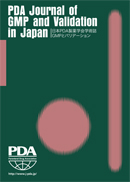
- 2 号 p. 20-
- 1 号 p. 1-
- |<
- <
- 1
- >
- >|
-
柳澤 徳雄2023 年 25 巻 2 号 p. 20-26
発行日: 2023年
公開日: 2023/12/28
ジャーナル フリーIn this review, MCB/WCB, which is an extremely important cell group for producing ATMPs, was briefly explained. Then, the regulations (GMP) that have evolved since the Kefauver-Harris Amendments have considered what kind of demands they have made on MCBs/WCBs, and the reasons for them.
抄録全体を表示PDF形式でダウンロード (819K)
-
藤原 秀安, 平井 友貴2023 年 25 巻 2 号 p. 27-33
発行日: 2023年
公開日: 2023/12/28
ジャーナル フリー海外で実施した高容量ウェアラブルインジェクターの臨床試験の結果を共有する。臨床試験は,組織への影響,皮膚反応,患者の忍容性の観点から5mL BD Libertas™(以下,Libertas)の性能を評価するために,幅広い年齢,性別,体重グループの52人の被験者を対象に実施され,各被験者は,4回の注射(腹部に動作有りまたは無しの2回,大腿部に動作有りまたは無しの2回)を受けた。これらの結果は,これまで一般的でないとされてきた5mLのヒアルロン酸溶液を,BD Libertas™ Wearable Injectorを用いることにより,大きな問題なく何らの追加措置も講じることなく皮下注射できたこと,また,BD Libertas™ Wearable Injectorは,注射中にストレスを大幅に増加させた,または患者の体に重大な悪影響を及ぼさなかったことを示す結果であると考えている。近年,高容量(2mL以上)の皮下投与が可能な生物学的製剤の開発今まで以上に行われており,本研究の成果が製薬会社や研究機関,医療機関における高容量皮下注射の開発・活用に貢献することを期待する。
抄録全体を表示PDF形式でダウンロード (2892K)
- |<
- <
- 1
- >
- >|